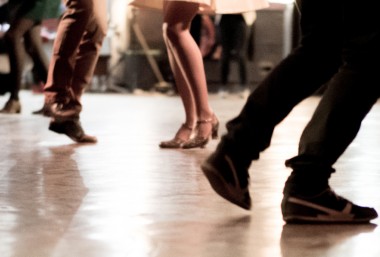Fortnite’s legally embattled dances
Anyone familiar with online gaming, or with teenage children, will have heard of the phenomenon that is FORTNITE. Released by Epic Games, Inc (Epic) in July 2017, the platform has achieved unprecedented popularity. One of the central elements of the game is the various dances and emotes that players can earn or buy. They are highly sought-after in-game trophies, and a bane for adults trying to curb their teenager’s in-game spending.
It is not surprising then that the dance moves have received attention, specifically attention in the form of multiple law suits. Epic has had several copyright infringement suits filed against it in the United States over the last year—each claiming infringement in relation to a particular dance move.
The existence of these suits is popular news within the gaming community, and they have been widely discussed. Whether or not each individual suit would succeed depends on several factors, including whether the complainant invented the dance move in question in the first place. One example of this is ‘the floss’, which first appeared on YouTube in the early 2010s, but now Russel Horning, known as ‘backpack kid’, is claiming he invented it in 2017. Another factor that will play a part in the success of the law suits is whether the complainant owns the dance move. For example, the inventor of the dance move known as ‘Orange Justice’ submitted his dance move as part of a competition run by Epic to have your invented move incorporated into Fortnite.
Establishing copyright infringement in the United States
What all of the infringement claims have in common is that, to succeed, they will first have to establish that there is copyright in a dance move.
While copyright invests automatically upon the creation of a work in which it subsists, in the United States, it is possible to register your copyright with the Copyright Office. In a decision issued on 4 March 2019, the Supreme Court of the United States found that in order to claim copyright infringement, the work in question must first be registered with the Copyright Office. This decision has led to the withdrawal of several of the law suits, at least temporarily, while the complainants seek to register their dance moves.
So, can you register copyright in a dance move? It’s likely that the answer to that question is no.
The Copyright Office has clear written directives that something more than a short dance routine consisting of simple linear movements is needed to have copyright. Alfonso Ribeiro (best known as Carlton in Fresh Prince of Bel Air) failed to gain copyright registration for his dance, ‘the Carlton’, when the Copyright Office concluded it was no more than a short dance routine.
The next few months will be interesting to watch, as the complainants reconsider their positions.
Would dance moves have copyright in New Zealand?
Whether similar claims would succeed under New Zealand legislation is an interesting question. Unlike the United States, we do not have the option of registering copyright with the Intellectual Property Office of New Zealand. Any copyright litigation goes straight to the courts, where the complainant’s first hurdle would be to establish they own copyright in the work. To own copyright, they need to have created the work, and the work needs to be something in which copyright can subsist.
In New Zealand, Section 14 of the Copyright Act 1994 defines the types of works in which copyright subsists. Section 2 defines ‘dramatic work’ as including a dance.
The question would then be whether there is a difference between a dance sequence and a dance move.
As is typical, New Zealand generally follows the United Kingdom approach when it comes to what constitutes a copyright work. To qualify for copyright, a work must be original. The originality threshold in New Zealand is low—a work is capable of having copyright if the author has employed their skill, labour and judgment.
If similar copyright infringement claims were filed in New Zealand, the main issue would be whether a dance sequence, or single move, would be a work in which copyright can subsist. The wording ‘a work of dance’ in the Copyright Act 1994 appears broad enough to include any dance, regardless of its length or complexity. There is at least an argument that a short dance routine, or distinct dance move, would be considered protected by copyright.






